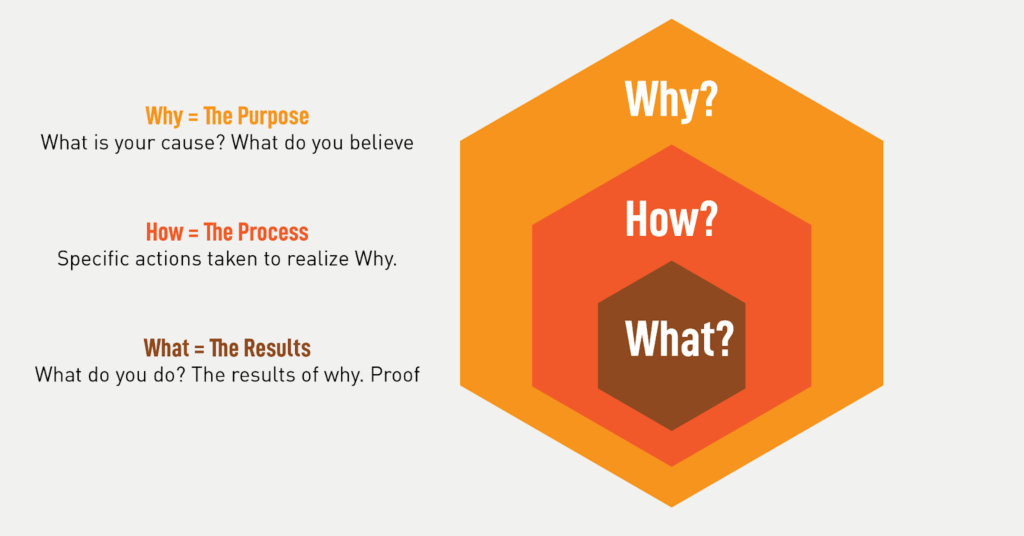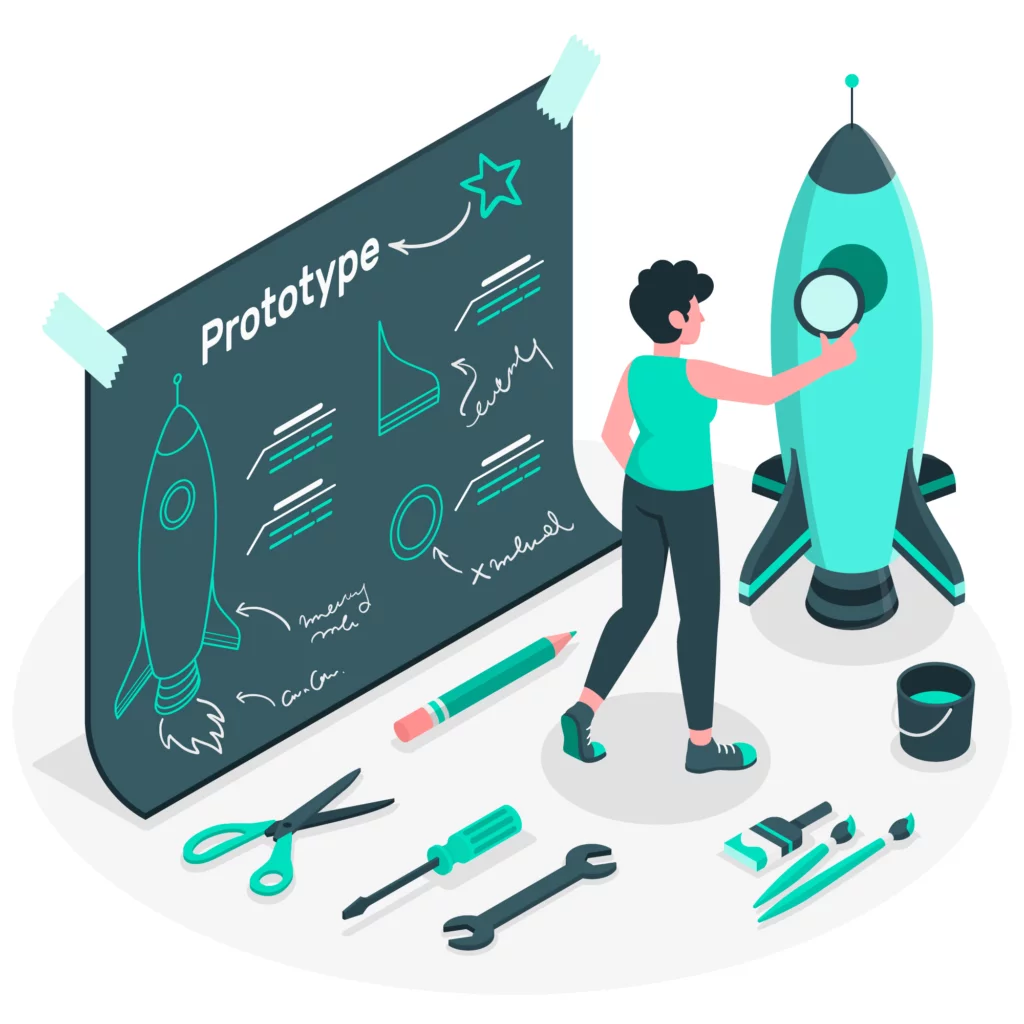Ever wondered how some products simply ‘click’ while others don’t? It’s not magic – it’s product thinking!
Whether you’re a non-tech founder or not, understanding this mindset is pivotal to any successful product. In this article, we demystify product thinking and illustrate how MOHARA’s unique approach can turn your concept into a product that resonates with users.
Ready to unravel the secret behind successful products? Let’s dive in!
What Is Product Thinking?
Product thinking is a strategic mindset that revolves around understanding and developing products. The nature of products is diverse and spans various industries; it could range from a tangible object like a can of Coke to a giant online platform like Amazon.
In the context of product thinking, a product is perceived as the desired outcome for a user. And every product interaction leaves an impact – big or small – on a user’s world. Product thinking is the skill of knowing what makes a product useful and why it has an impact on people.
It could be as simple as providing you with that refreshing Coke when you are thirsty or as complex as allowing you the convenience of getting into your car and driving to a supermarket. Any interaction that changes a user’s world is a product outcome. This interaction can be negative, too – hands up if you have ever received a Christmas gift you didn’t want!
Product thinking goes beyond desirability
Generally, product thinking is understanding why something is useful to people. It understands the emotional connection to an individual need – also known as the desirability of the “why” of your product idea.
Many product management manuals will tell you that product thinking is all about the desirability of a product. But at MOHARA, we believe it goes beyond that.
Obviously, testing a product’s desirability is an integral part of any product development journey, but it shouldn’t overshadow other crucial elements of product thinking.
As we see it at MOHARA, product thinking has three layers: desirability, creation, and actualisation. This framework aligns well with Simon Sinek’s Golden Circle, which starts with ‘why’ (desirability), followed by ‘how’ (creation), and finally, ‘what’ (actualisation). More on this below!
Using Simon Sinek’s Golden Circle in Product Thinking

In his book Start with Why, Simon Sinek presents the idea of his Golden Circle.
The idea is that finding the purpose of your business will, in turn, allow you to use your market knowledge and understanding of what users will value to figure out the “how” and the “what” of your product features and product-market fit.
Simon Sinek’s Golden Circle model and product thinking share the same underlying concept. They both advocate starting with the ‘why’, then focusing on the problem to be solved, and finally aligning it with the user’s or customer’s needs and desires.
Let’s dig deeper using Apple as an example:
❓Why
Product thinking starts with figuring out the ‘why’ – the core reason your product exists. Simply put, it’s about understanding the problem your product is trying to solve or the need it’s meeting for your users. This ‘why’ is more than just a question; it’s the foundation of your product vision and it shapes your product’s direction.
Think of it as the value you’re trying to bring to your users. This ‘why’ connects with the user’s needs on an emotional level, which drives the whole process of creating a product. Remember, if you don’t truly understand and meet a user’s need, it’s tough to build a product that people will find valuable.
For Apple, as Sinek describes, the ‘why’ is their belief in challenging the status quo and thinking differently. This ‘why’ connects with users who share these values and view Apple not just as a tech company, but as a symbol of innovation and rebellion against the ordinary.
❓How
Next is the ‘how’ – how your product brings the ‘why’ to life. This is all about how your product tackles the problem or need you’ve identified. What unique twist does your product bring to the table? What core features make it stand out? And how does user experience fit into the mix?
Apple’s ‘how’ is manifested in the way they challenge the status quo: by designing products that are both user-friendly and aesthetically pleasing.
Unlike many other tech companies, Apple’s design philosophy emphasizes simplicity and elegance. Their products, from the iPhone to the MacBook, are not just tools but experiences in themselves, thanks to the seamless integration of hardware and software.
❓What
And finally, we have the ‘what’. This is the stage where your product becomes more than just an idea – it’s the grand unveiling of all the features and functionalities that bring the ‘why’ and ‘how’ to fruition. What exactly does your product do? How do the features gel together to tackle your identified problem and deliver the value you’ve promised?
The ‘what’ is all about the nitty-gritty details of your product – its specific solutions, functionalities, and characteristics. It answers questions like, ‘What will it look like?’ and ‘Who’s going to build it?’ Essentially, the ‘what’ is where all the planning and strategising come to life, and where your product takes its final shape.
Finally, the ‘what’ for Apple is their products: the iPhone, the MacBook, the iPad, the iPod, and so on. These products, with their unique design and freatures, are the embodiment of Apple’s ‘why’ and ‘how’. They’re where Apple’s vision of challenging the status quo becomes a reality that consumers can use, and enjoy.
| 💡Expert insight: Are there other frameworks for product thinking?
The Golden Circle is not the only framework that you can use for product thinking. Another great approach is IDEOs Desirability, Feasibility, Viability approach. It has three components: ➡️ Desirability: What’s the unique value proposition? Do people want this product or service? Does it make sense for them? ➡️ Viability: Can we build a sustainable business? What has to be true for this business to work? What are the costs? How will you pay for it? ➡️ Feasibility: Is the product sustainable and be profitable in the long run? Both methodologies value purpose and practicality. IDEO’s method divides product thinking into three clear stages: human needs (Desirability), business logic (Viability), and technical feasibility. There is usually iteration back and forth between these stages. Sinek’s Golden Circle is a more holistic view. This layered framework emphasises the innermost layer (Why) as the foundation for the outer layers (How and What). |
Product thinking is holistic
Product thinking skills are more of a “product mindset”. A product mindset is a holistic view of a product’s journey from inception to completion that focuses on its value to the user.
A skilled product thinker is not only aware of their contribution, but also appreciates the roles and responsibilities of everyone else in the team. This includes everyone from the UX designers who shape the user’s interaction with the product, the developers who turn concepts into reality, to the product owner who guides the overall vision and strategy.
Each team member plays a unique part in bringing the product to life, and understanding these varied roles is essential to cultivating a holistic view of the product’s journey. This mutual appreciation and understanding foster effective collaboration and ensure that the final product aligns with the user’s problem and needs.
This holistic view allows for more effective collaboration and ensures the creation of meaningful solutions and, in turn, successful products.
| 💡 Expert Insight:
“Product thinking means truly understanding a product’s purpose, its value, and how it functions. It’s also about recognising your own strengths in contributing to the product, while also being familiar with other areas. This way, you can discuss, critique, or ensure others are doing their part effectively”. Ben Blomerley – Co-Founder & COO at MOHARA |
Why is product thinking important?
Developing the ability to apply product thinking is critical for founders. In the world of early-stage businesses where innovation and uncertainty walk hand in hand, it’s even more vital.
Product thinking serves as the compass that guides the journey from an idea’s conception to its transformation into a tangible, valuable product. Now that you know what product thinking is, we’ll show you how to develop a product thinking mindset.
How Non-Technical Founders Can Develop Product Thinking
A product thinking mindset isn’t limited to membership of an exclusive club just for tech gurus. It’s for anyone keen on solving real problems, irrespective of their technical limitations.
Let’s explore some crucial aspects of product thinking that can help transform your innovative ideas into great products. Below, we highlight key elements that non-technical founders should keep in mind:
🔷 Embrace T-shaped product thinking
We’ve touched on the idea of the Golden Circle framework above, but we want to explore this idea further.
Shaping a product-thinking mindset as a non-technical founder involves a comprehensive understanding of a product. You must appreciate that a product is more than its desirability or the ‘why’.
It’s about the user outcomes it produces and its grounding in technology. Essentially, you’re looking at the full spectrum of product thinking, which includes the ‘how’ and ‘what’ alongside the ‘why’. At MOHARA, we call this “T-shaped product thinking”.
| 💡 What is T-shaped product thinking?
When we talk about “T-shaped” product thinking, we’re picturing a person who not only has in-depth expertise in one area (the vertical line of the T), but also a broad understanding of many other areas (the horizontal line of the T). Non-technical founders might not have extensive expertise in technology or product development. Instead, their expertise could be in the market they are targeting or related to the problem-solving aspect of their product. This is their “why” – the reason their product exists and the benefit it brings to users. But having a product mindset means you can’t stop at just understanding the “why”. You also need to understand the “how” – how your product works or how it’s built – along with the “what” – what features it has. For instance, consider a sign-up/login process. There are many ways to log in, from a simple email-password combo to using social media accounts or magic links. The “why” might be the need to view user history, the “how” could be using a social login, and the “what” is an app that lets you sign in via Google. That’s the broad, horizontal part of the T. You don’t need to be an expert in every part, but you should have a general understanding of how all the pieces fit together. This balanced perspective helps non-technical founders contribute effectively to their product’s development journey and steer it in the right direction. |
🔷 Strike a balance
Product thinking is also a strategic game of managing trade-offs and scarcity. If one had unlimited time and resources, achieving product-market fit would not pose a challenge.
Nature through evolution shows us that given enough time, every living organism will find its “product-market fit”. But in the start-up world, time and resources are far from limitless. So, the key question becomes, how can one achieve this “problem-solution” fit faster?
While it’s important to focus on desirability and continuously refine the assumptions based on testing, it’s equally vital to avoid spending all your energy building a massive product without returning to test those assumptions.
The key lies in striking a balance, ensuring awareness of the requirements at different stages, focusing on creating the shortest possible feedback loops, and making good strategic choices that will propel your product towards market fit in the most cost-effective way possible.
| 💡 Expert Insight:
“Product thinking is a real game of trade-offs and a real game of making good strategic choices that shorten the feedback loops as much as possible. This approach recognises the complex nature of product thinking and promotes agility and adaptability in a start-up’s journey towards product-market fit”. Ben Blomerley – Co-Founder & COO at MOHARA |
🔷 Constantly observe and enquire
Julie Zhuo, the co-founder of Sundial and former VP of product development at Facebook, suggests that observation and enquiry are other important factors in product thinking.
Observation
Observation is all about noticing how people respond when using products or services in their daily lives. And a great place to start is with yourself. Have you ever considered why a product fails to impress or annoy you?
Take the example of the food delivery app Deliveroo. It can be a lifesaver on a busy day but it has flaws. For instance, it has been noted that the app often crashes during peak hours and the delivery tracker isn’t always accurate.
These experiences provoke thought: Could the app be better optimised for high-traffic periods? Is there room for improvement in the delivery tracking system?
Once you’ve started taking note of your reactions, extend that curiosity to those around you. What makes your friends rave about a new product or rant about it? What’s the feedback on the products you’ve suggested?
And lastly, pay attention to the wider world. What are online reviews saying? What opinions are gaining traction on the Internet? What makes this product stand out from its competitors, and why are people responding the way they are?
As you keep observing – starting with your own product experiences, then extending it to those of your friends, and finally to those of the larger world – you’ll find yourself asking deeper questions. And before you know it, you’re on your way to developing a robust product-thinking mindset.
Enquiry
Here is a little pearl of wisdom from the world of product thinking: Inquiring minds build better products. Another way to cultivate your product thinking mindset is to dig into the “why” behind your observations.
Your starting point should be a genuine curiosity about people and their behaviours. It could be in the form of reading books that explore human behaviour, engaging in discussions with different kinds of people, or exploring customer feedback when crafting products. It could also be as simple as asking people why they reacted the way they did to a product or service.
But don’t just stop at face-value responses. Probing deeper is where the real magic happens. It’s the most important thing. Use data analytics from user research, customer discovery, and market trends to truly understand the ‘why’ behind their reactions.
You don’t need to spend years doing this. Adopt a more proactive approach: Try a new product, feature, or service every week, and spend time reflecting on how specific product decisions affect the intended audience.
As you continue this practice, you’ll begin to see patterns and understand why some products skyrocket while others fail. If you then begin building your own product, you’ll have a more diverse pool of inspiration to achieve your intended product outcome.
How MOHARA Approaches Product Thinking
At MOHARA, our approach to helping founders create a digital product is deeply rooted in product thinking.
As a startup studio, we’re different from outsourced development companies because we don’t just focus on the “what”. While many ask for a clear scope and proceed to build, we dig deeper. We’re interested in the bigger picture.
We understand early-stage start-ups, because that’s what we do. We help non-technical founders realize their vision.
Drawing on this experience, we help our clients navigate the uncertainty of product development in a start-up environment. This involves engaging with our clients to validate and challenge their product’s purpose, to perfectly fine-tune their ‘why’.
We aren’t afraid to ask probing questions to help them deepen their understanding, but we at the same time respect their ownership of this critical aspect of product thinking.
Once we’ve refined the ‘why’, we then offer tailored advice on how they should build their product. Our recommendations aren’t plucked from thin air; they are based on factors like budget and we recommend an approach based on the amount of time and resources.
We see a product not just as a single entity, but a composition of many ‘micro-products’, each representing a unique user flow with different potential outcomes.
For example, an e-commerce platform might have several outcomes for different user types, from sharing a purchase to listing more products.
However, we firmly believe that not all these flows need to be built immediately. Guided by a mutual understanding of the ‘why’, we assist our clients in prioritising which features to focus on first, effectively leading the way to a robust minimum viable product.
In the end, MOHARA’s approach uniquely balances a broad understanding of product thinking with a deep dive into each client’s “why”, which fosters a symbiotic relationship that cultivates successful digital products.
🚀 Let’s Talk!
To wrap up, if you are a non-technical founder embarking on the journey of creating a successful digital product, product thinking is your compass. And if you need an experienced guide to help you navigate this journey, look no further than MOHARA. Our team is ready to partner with you to turn your idea into a successful product. Reach out to us today, and let’s start this exciting journey together.












